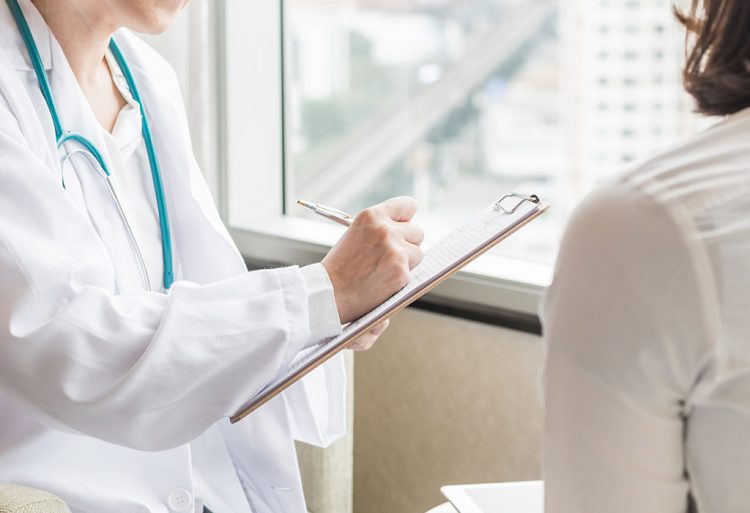Various gynecological conditions can create similar symptoms. For instance, women with polycystic ovary syndrome (PCOS) may have irregular, heavy bleeding with spotting and post-coital bleeding (PCB), but these symptoms could also apply equally to women with a submucosal fibroid.
Proper diagnosis of condition and cause is crucial to offer the appropriate treatment, taking account of the craved outcome for women. This is especially relevant when considering fertility problem.
Here we are discussing abnormal bleeding, pelvic pain, and urinary symptoms which is the most common gynecological problems in women. It also explores their multiple causes, diagnosis, and management. However, it does not cover pregnant women.
Abnormal Bleeding
At any phase of a woman’s reproductive life and after, abnormal bleeding is one of the common issues.
In 2018, National Institute for Health and Care Excellence (NICE) updated Clinical Guideline (CG) 44 on assessment and management of heavy menstrual bleeding (HMB), which is a good source of relevant clinical guidance. Bleeding other than regular heavy bleeding is outside the scope of NICE CG44.
Symptoms of abnormal bleeding consist of:
- variation in length and flow of menstruation
- intermenstrual bleeding (IMB)
- PCB
- Postmenopausal bleeding (PMB) a year after the menopause, which includes bleeding that occurs when a woman is on
- hormone replacement therapy.
These symptoms can happen in isolation or in combination. Women may also encounter pain and pressure symptoms.
History
An accurate history first requires to be taken from the woman. It should incorporate:
- the length of the cycle from the first day of bleeding in one cycle to the first day of bleeding in the next
- the amount of blood loss each day, which can be assessed by asking about frequency of pad or tampon change, the
- presence of clots, flooding, and if the woman is able to leave the house
- the days of the cycle it occurs
- any cyclical hormonal changes during the month
- IMB: amount, pattern, timing, and if every month
- PCB: amount, duration, frequency, timing, and if every time
- any hormonal contraception used
- last cervical screening and results
- previous or current sexually transmitted infection and any discharge
- any gynecological operations.
Examinations
over and above an accurate history, speculum and pelvic examinations are important. The speculum examination checks the cervix and can identify cervical polyps, erosion, and cancer. The pelvic examination may identify a mass which can imply the presence of fibroids and pain that may indicate other pathology.
Investigations
A full blood count test should be performed on all women with HMB, in parallel with any HMB treatment offered. A serum ferritin test for suspected anemia should not be routinely executed on women with HMB. If women have irregular bleeding and shaky hormonal dysfunction, tests consist of thyroid-stimulating hormone to examine HMB in the absence of pathology and when there are other clinical symptoms of thyroid disease, follicle-stimulating hormone (FSH), luteinizing hormone, and oestradiol. Oestradiol tests should not be used to pinpoint the menopause and a serum FSH test should not be used to diagnose the menopause in women using combined estrogen and progestogen contraception or high-dose progestogen. Prefer an FSH test to diagnose the menopause only in women aged:
- between 40–45 years with menopausal symptoms, including a change in their menstrual cycle
- under 40 years in whom menopause is suspected.
In the recent 2018 guideline, hysteroscopy is recommended as the first-line investigation for bleeding and ultrasound is the first-line diagnostic tool for identifying other abnormalities like fibroids and the presence of pain. Hysteroscopy can sight the presence of pathologies, such as fibroids and ovarian cysts, that shows a higher sensitivity in finding out abnormalities compared with ultrasound.
Dependent on age and presenting complaint, a hysteroscopy, biopsy, and treatment may be required to find out any cavity pathology and colposcopy to investigate any cervical abnormality.
Women may present with similar symptoms which have different causes. For instance, women with PCOS may have irregular, heavy bleeding with spotting and PCB, but these symptoms could apply equally to women with a submucosal fibroid.
Causes, symptoms, and treatments
The table below outlines the causes of HMB, PCB, and IMB; their symptoms; and treatments.
| Abnormal bleeding and causes | Symptoms | Treatments |
| Heavy Menstrual Bleeding (HMB) | ||
| Intracavity/submucosal fibroids | HMB, spotting, Inter Menstrual Bleeding(IMB), or PCB | Hysteroscopic resection |
| Endometrial polyps | HMB, IMB, PCB | Hysteroscopic resection |
| Adenomyosis | HMB and pain | Hormonal medication, levonorgestrel intrauterine system (IUS), tranexamic acid, menfametic acid, embolization |
| IUCD/medroxyprogesterone acetate injection | Irregular bleeding, HMB | Change contraception |
| polycystic ovary syndrome (PCOS) | HMB, irregular, spotting, or continuous bleeding | Depends on the patient’s needs. Can use hormones to control cycle if the patient does not want to get pregnant |
| Hyperplasia | HMB, irregular, spotting, or continuous bleeding | Treatment with progestogens |
| Endometritis | HMB, irregular, spotting, or continuous bleeding | Treatment with antibiotics |
| Cancer | HMB, IMB, PCB, discharge | Referral to gynecology oncology team for hysterectomy |
| No cause found | HMB, IMB, PCB | Treatment with tranexamic acid, NSAIDs (e.g. mefenamic acid), |
| Fibroids—treatment dependent on size and location | HMB, IMB, PCB | Removal myomectomy, uterine artery embolization (UAE), ulipristal acetate 5 mg (not to be confused with ulipristal acetate 30 mg used for emergency cont |
| Post Coital Bleeding (PCB) | ||
| Cervical polyps | IMB, PCB | Removal |
| Cervical ectopy | IMB, PCB | Can be treated with cold coagulation |
| Sexually transmitted infection | IMB, PCB | Treatment in accordance with guidelines |
| Vaginal atrophy | PMB, pain with sex | Vaginal estrogens |
| Endometrial polyps | IMB, PCB | Resection |
| Cervical cancer | IMB, PCB | Referral to the gynecology oncology team |
| Inter Menstrual Bleeding(IMB) | ||
| Cervical and endometrial polyps | IMB, PCB | Removal |
| Submucosal fibroids | HMB, IMB, PCB | Hysteroscopic resection |
| Cervical and endometrial cancer | HMB, IMB, PCB, PMB | Referral to the gynecology oncology team |
Pelvic pain
In addition to gynecological causes of pelvic pain, bowel, bladder, and musculoskeletal causes may require to be ruled out.
History
The initial assessment should establish if the pain is linked to the menstrual cycle or not. Keeping a diary may be beneficial if there is suspicion.
Specific questions to ask include the following:
- nature of pain
- how often and associated factors
- any kind of relationship to periods
- relationship to sex
- problems with passing urine or opening bowels
- pain when passing urine or opening bowels, especially related to periods
- what helps
- what aggravates the pain.
Examinations and investigations
Vaginal and pelvic examinations, ultrasound, magnetic resonance imaging, and, in some cases, diagnostic laparoscopy, may be pushed forward to diagnose the causes of pelvic pain.
Causes, symptoms, and treatments
Endometriosis is one of the most common causes of pelvic pain in women. It usually causes pain before, and just after, periods and sexual intercourse. Some women may also have non-cyclical pain.
On average, it takes 7.5 years from the onset of symptoms to receive a diagnosis. There can also be a pain when passing urine and defecating. NICE has also published a separate guideline on endometriosis.
Women who present with ascites and/or a pelvic or abdominal mass, which is not uterine fibroids, should be referred instantly for suspected ovarian cancer. execute tests in primary care if women, particularly if they are aged 50 years or older, report any of the following symptoms on a steady or frequent basis, especially more than 12 times per month:
- abdominal distension
- feeling full (early satiety) and/or loss of appetite
- pelvic or abdominal pain
- increased urinary urgency and/or frequency.
The table below outlines the causes of pelvic pain, symptoms, and treatments.
| Condition | Symptoms | Treatments |
| Endometriosis | Cyclical pelvic pain, worse before and just after periods. Deep dyspareunia. Infertility | Laparoscopy and removal, hormonal contraceptives, or analgesia |
| Fibroids | Pain and pressure, which may be acute if torsion of pedunculated fibroid or degeneration | Surgical, UAE, hormonal contraceptives, or ulipristal acetate 5 mg (not to be confused with ulipristal acetate 30 mg used in emergency contraception). |
| Ovarian cyst | Unilateral or bilateral pain, which can be sudden and acute if the cyst ruptures and spills into the pelvic cavity. Acute with vomiting if torsion. Can be ongoing ache | Conservative management, i.e. monitoring, or surgical removal |
| Prolapse | Backache, lump in vagina, pressure, or pulling | Pelvic floor exercises, pessaries, or surgery |
| Pelvic infections | Vaginal discharge, pyrexia, generalized abdominal pain, and cervical excitation if acute | Antibiotics |
| Pelvic Adhesions | Non-cyclical pain and often after operations or infections. Fixed pelvis on examination | Surgical removal (caution as adhesions may reform), reassurance, and analgesia |
| Misplaced IUCD/IUD | Pain and bleeding may be worse with intercourse, seen on the scan | Replace |
| Non-gynecological causes | General pain, not related to cycle, can be referred | Referral to Gastro-Intestinal (GI), urology, or pain clinics |
Urinary symptoms
Majority of women can be affected by urinary symptoms to a greater or lesser extent at several times in their lives. Symptoms can consist of pain when passing urine, snag starting the urine stream, difficulties with the flow, frequency of passing urine, or trouble holding urine (e.g. stress incontinence).
History, examinations, and investigations
An assessment of the presenting complaint should be embarked upon. Examinations and investigations include:
- abdominal examination
- vaginal examination with Sims’ speculum to look for prolapse
- midstream urine testing for infections
- ultrasound to look for any abdominal mass
- bladder diary
- urodynamic testing if indicated.
Causes
Prolapse, usually anterior, is the most typical cause of urinary symptoms. Other causes range from simple infections which can be treated easily, to pressure from fibroids and bladder issues.
Treatments
The treatments for urinary symptoms depend on the cause of it.
For instance, an infection can be treated with antibiotics, whereas a prolapse can be treated with pelvic floor exercises, support such as ring pessaries, and surgery.
If the cause is related to a mass, like a fibroid, then it needs surgical removal of the bulk decreased by uterine artery embolization or ulipristal acetate 5 mg.
Summary
When observing and assessing women with gynecology conditions it is crucial to keep in mind that there may be several causes to one presenting complaint.
Establishing the right cause can aid to direct treatment and resolve the symptoms. Even though guidance is crucial but some complaints will span different guidelines so having in-depth knowledge and taking a good clinical history is of huge significance.



